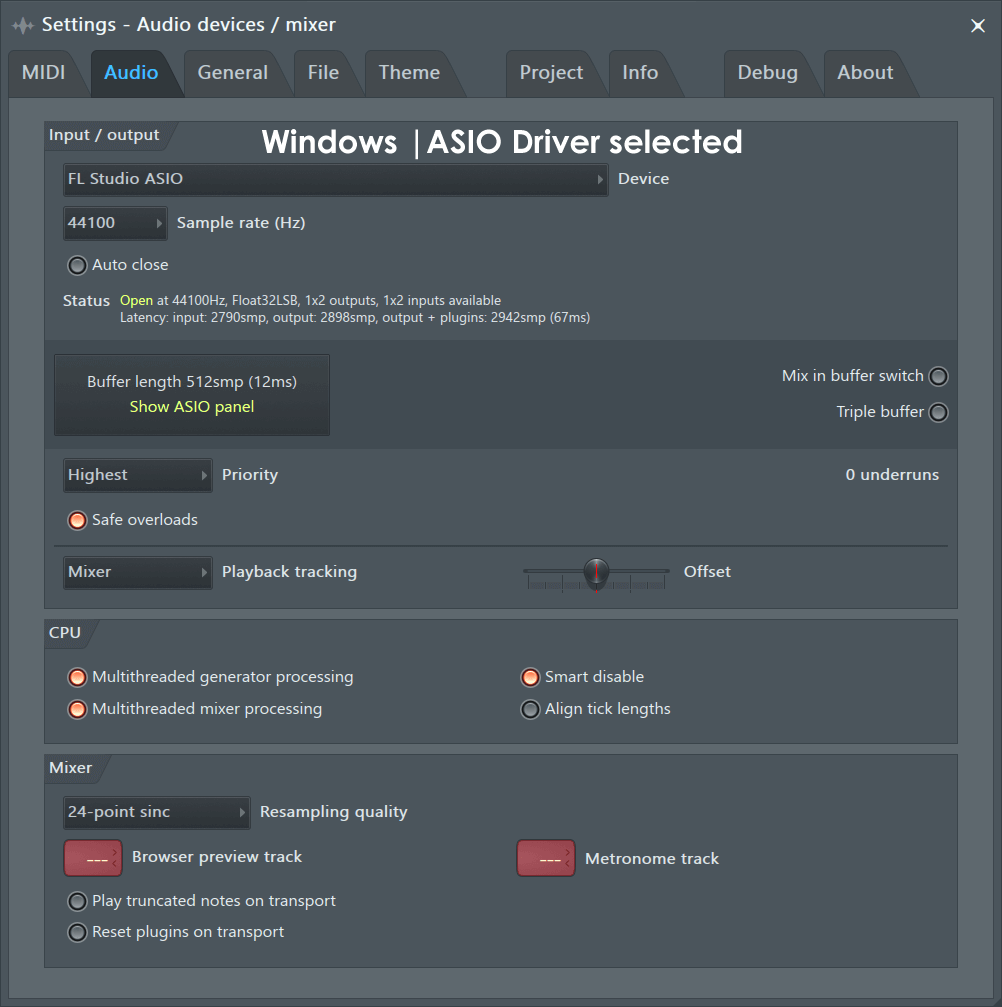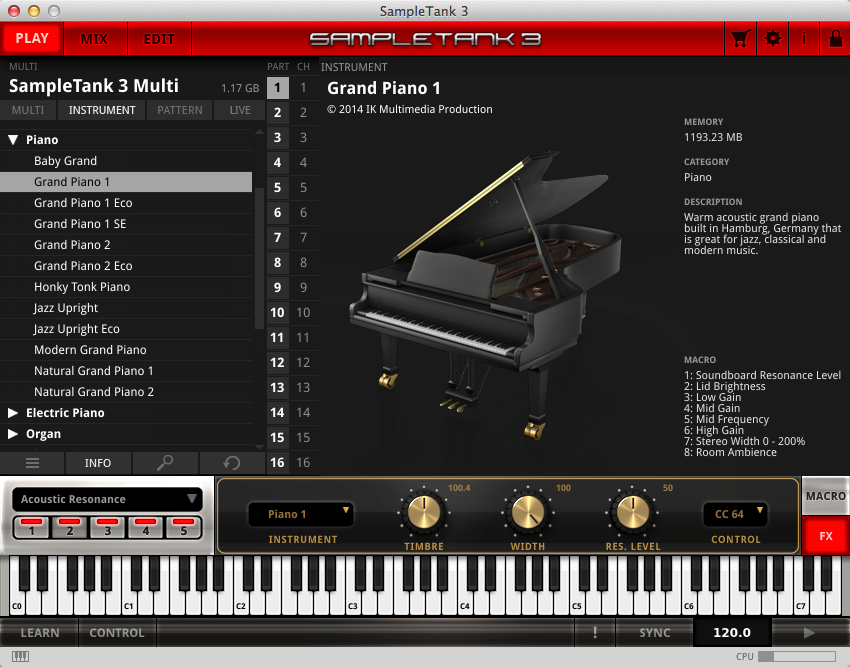ASIO4ALL V2 DRIVER FOR MAC - Plugins misbehaving - Crackling can also be caused by plugins behaving badly. Switches - Try the 4 possible combinations of the ' Always resample This is the step that is required to use a USB microphone with your audio device. Since both are activated they will show under the Mixer Output menus. Right-Click the. This video is part of the course 'Setting up a digital Home Studio'. You can find the complete course including extra information and links on our website. I'm no Mac user, but from what I've read in about 5 minutes of Googling, it seems that Mac's Core Audio drivers are better implemented into the OS and make alternative drivers like ASIO unnecessary. Original Poster 1 point 2 years ago. Thank you so much! I read that when installing it but assumed it left out Mac OS but that was. Download usb audio asio driver mac os x 10.6.8 for free. Business tools downloads - USB Audio ASIO Driver by and many more programs are available for instant and free download.
The steps below will guide you through how to set up your Scarlett with FL Studio:
Once you have installed the driver go to your computer's 'Control Panel' > 'Sound' option. In the 'Playback' and 'Recording' tabs, make sure the Focusrite/Scarlett option is selected as the default device. If it isn't already, right click it and select 'Set as Default Device'.
Now, open FL Studio. Open the 'Options' menu, go to 'Audio Settings' and set the device to 'Focusrite USB ASIO'. You'll also need to set 'Playback tracking' to either 'Hybrid' or 'Mixer'.
You can change the buffer size from the ASIO Control Panel, which you can open by clicking 'Show ASIO Panel'.
Go to the mixer window ('View' > 'Mixer') and click on the master channel. Make sure the output is set to Focusrite (in this case we are using Output 1 and 2).
To get input from a microphone, go to an insert channel and select the input as the appropriate input:
With these settings you can then press Record and Play to record your audio which will appear as a waveform once recorded:
You can then export this by going to 'File' > 'Export' and selecting the desired format (we would recommend WAV unless you have a reason to choose something else). From here you'll be asked to choose a name for the file as well as it's location. This will then bring up the rendering window where you can choose what you are exporting and other details:
When you are happy with the settings hit start to render.
People kept telling me to download ASIO4ALL when I was having latency issues with my recordings a while ago. But ‘what is ASIO4ALL?’ I asked And I’ve just got a new Macbook…..’Can you get ASIO4ALL on a Mac?’
Latency can be all too common of a problem when you are first starting out in your home recording studio. The delay between pressing a note on your keyboard, or strumming a chord on your guitar and the time it takes for the computer to register the signal, can cause havoc when it comes to keeping in time, virtually making recording a track impossible. When I first started making music at home this used to be the thing that frustrated me more than anything!
So you google what to do to stop the issue and you keep seeing phrases like;
“download ‘ASIO4ALL’, it will solve all your problems”
What is this mystical thing? Well, in short, ASIO4ALL is a hardware independent low latency driver built for Windows operating systems and designed to reduce latency. ASIO4ALL is not available for Mac computers and is only available on Windows.


Read on for a bit more information on what exactly this mystical thing is and some other strategies for reducing latency if even the mighty ASIO isn’t solving your issues.
Common causes of latency?
Latency is becoming less of a problem as computers become more modern and have a higher specification but it can still be an issue for many people and certainly used to be a problem for virtually everyone in a home recording studio had to deal with. This delay from playing a note to it sounding can be anything from milliseconds to entire seconds in some cases. But even a lag of milliseconds is very noticeable and very annoying!
Latency comes about because unfortunately computers aren’t built specifically to be used for recording audio, they are built as all-around machines that can perform lots of different tasks. For this reason, the built-in sound card and associated drivers aren’t up to the job of processing sound quickly enough to avoid noticeable latency.
What is ASIO4ALL?
Ok, I will try and keep this as simple and brief as possible, here goes:


The sound card within your computer is provided with drivers which enable your audio applications and the sound card to communicate. In most Windows computers up until fairly recently these pre-installed drivers sucked (MME/ Direct X may sound familiar to you) and produced a lot of lag or latency. This made using anything like a MIDI keyboard or recording audio into a DAW very frustrating! This was because the drivers that came in these computers were not designed with music production in mind and were busy trying to do other non-music stuff at the same time…. ruining everything!
So the lovely people at Steinberg (the company behind Cubase DAW software) decided enough was enough and they designed a driver that was tailored towards audio production. The ASIO drivers would bypass the windows ones and the problems would be solved.
Unfortunately, you still needed professional standard audio cards to use the ASIO drivers, which was great if you were in a professional studio but not great for most of us trying to record music in our bedrooms. So ASIO4ALL was released to do exactly what it says in the name, be a driver for ALL. How it works is not important but it sort of acts as a middleman passing messages between the Windows hardware and ASIO.
Do I need it on a mac?
If you have moved from a PC to a mac you may be expecting latency issues like I was. I don’t want to Windows bash here too much, I’m sure they do make some great machines these days. I’m just talking from my experience. I have always needed to download additional drivers on windows PCs to deal with latency even when I thought I had top of the range specifications.
Then I got fed up and one day splashed out on a (second hand) MacBook, and I have not had any latency issues since. For this reason, you will not need ASIO4ALL on your Mac. And it is a good job you don’t as ASIO4ALL isn’t actually 4 ALL, it is only actually 4 Windows.
Even on really old macs, you shouldn’t really need any additional drivers. Apple computers have excellent built-in audio drivers known as Core Audio which should work just fine.
Will I still need it on a new Windows PC?
The good news is that hopefully not. Most Windows computers made for Windows 7 and onwards are made with WASAPI. This fun sounding acronym stands for the Windows Audio Session API. It works in a similar way to ASIO by talking to audio devices, bypassing system mixers and allowing direct communication between applications and audio devices.
Asio For Mac Os X
So you should be ok on newer Windows machines but you can still try ASIO4ALL if you are still having latency issues.
If that still doesn’t help, below are a few more quick fixes for latency that you can try.
Other alternatives?
Get a better audio interface
Windows Asio Driver For Mackie Vlz-4
One of the quickest things you can do (if you haven’t already) is to buy a decent audio interface. These will act as an external soundcard with specialist drivers built-in. Unlike computer soundcards and drivers, these are designed for this specific purpose.
In fact, many audio interfaces actually have ASIO drivers built in.
I recommend this interface from Focusrite if you don’t already own one, I’ve had one for a couple of years and never looked back!
Reduce the audio buffer size
The time that your computer sound card needs to process information is known as the buffer size. If your buffer size is too large you will get latency. So by reducing this buffer size you can reduce this lag, however, beware, the smaller the buffer size the more strain is placed upon your computer and it may cause glitches. So have a play with different buffer sizes and see if it helps.
Increase the sample rate
Another setting to fiddle with in your DAW settings is the sample rate. By raising the sample rate you are increasing the number of samples the computer is reading every second. As with a small buffer size the higher the sample rate the harder your computer has to work.
Check it isn’t a plugin that is causing it

Some plugins can put quite a strain on your computers CPU and so if you’ve recently installed a new one this may be causing the latency issues.
Asio For Mac Os
Asio For Macbook Pro
How to set up ASIO4ALL in Ableton
I will quickly explain how to get ASIO4ALL working in Ableton but it should be a similar process in other DAWS too.
Once you have downloaded ASIO4ALL from here. Head into preferences in Ableton. From here, go to the audio tab on the left and then you will see an option for driver select. This should allow you to select ASIO4ALL as the driver and you are good to go!
Conclusion
So to conclude, ASIO4ALL is a handy way to quickly reduce latency issues in your home recording studio. Although it is not so applicable nowadays as computers improve (or if you have a MAC) I owe the makers a big thank you for saving me from tearing my hair out in frustration over the years! Thanks guys!
And if you are still having issues hopefully those other tips will help you on your road to a lag-free recording studio!
